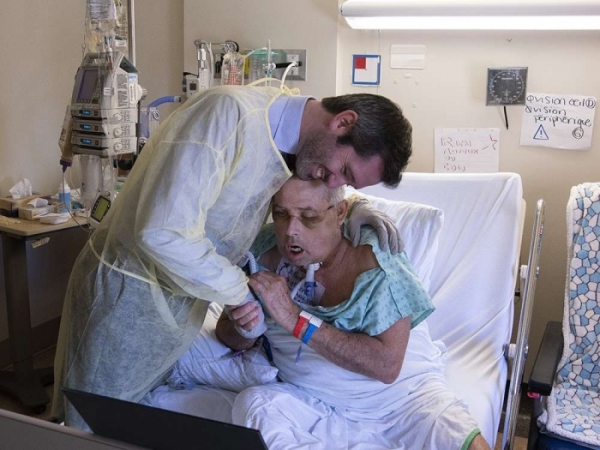Seven years ago, a hunting accident left Maurice Desjardins severely scarred and unable to eat, drink, speak, or breathe on his own. His former life ruined, Desjardins saw no way for things to return to how they had once been. But, given modern medicine, new hope has arisen. Earlier this September, Montreal’s Maisonneuve-Rosemont Hospital announced that, at the age of 65, Desjardins became the first successful recipient of a facial transplant in Canadian history.
The process began in 2013, with a doctor and a dream. Before he became a superstar in the medical world, Dr. Daniel Borsuk was a student at McGill. From 1997 to 2006, he studied Physiology as an undergraduate and then pursued a joint MBA-Medical program as a graduate student.
Borsuk feels that the management aspect of his education still applies to his practice as a plastic surgeon.
“[It’s] beyond medicine, beyond science,” Borsuk said. “It’s teamwork. It’s skillsets management that we focus on during management training that clearly played [a role].”
In the complex process of Desjardins’ face transplant, teamwork was key. The procedure required the collaboration of more than 100 other medical, nursing, support, and technical staff including nine surgeons.
Among the medical staff were several psychiatric teams. For a surgery of this magnitude, Desjardins had to receive psychological preparation for several years.
“It’s symbolic in a lot of ways, people are worried about their identity [and he needed] the ability, the understanding to reconcile having someone else’s face transplanted on him,” Borsuk said. “The patient has to be able to take his anti-rejection medication for the rest of his life. This is a potentially fatal procedure.”
After seeing a limb reattachment surgery as a graduate student and reflecting on his lifelong fascination with the face, Borsuk knew that he wanted to undertake a facial transplant.
In the beginning, there was much preliminary work and practice to be done. Borsuk and his team operated on cadavers to understand the mechanisms of the surgery and determine how to best find a donor. Nonetheless, as time progressed, Borsuk began to see there were certain criteria his future patient had to meet.
“[We needed] someone who doesn’t have any other options, who’s suffering, who could benefit from this type of procedure,” Borsuk said.
Desjardins met the necessary standards. When asked what he wanted most, Desjardins replied that he just wanted a normal life: To go outside with his granddaughter without having to wear a mask and to sleep peacefully next to his wife.
After the final preparations were complete—including acquiring a donor face, securing funding, and satisfying both legal and ethical concerns—the procedure began.
Borsuk started with the 12-hour-long removal of the donor face and the 17-hour-long preparation of Desjardins’ face. By the end, most of his old face was removed, save for the upper eyelids, eyes and forehead. He was ready for the transplant.
Time was a key factor. The risk of failure increases the longer the donor face spends without blood. When cutting through bone, skin, scar tissue, and arteries, blood loss must also be minimised.
After the donor’s face was brought in, it was placed onto Desjardins’ skull. Borsuk and his team adjusted the plates and screws, fitting the new and the old together. The medical team worked their way down Desjardins’ face; first working on the nose and then the cheekbones. By the time they had reattached the arteries, they could slow down. Everything went according to plan. The face was transferred successfully.
The recovery process continues to be slow.
“We can’t rush these things,” Borsuk said to The National Post. “But does he like his face? Oh my God, he loves it. Yeah, he’s enjoying his face right now.”
Desjardins’ breathing tube has been removed and he is slowly learning to eat and drink. Borsuk says his nerve endings will reconnect at his lips within six months and he will be able to smile.









